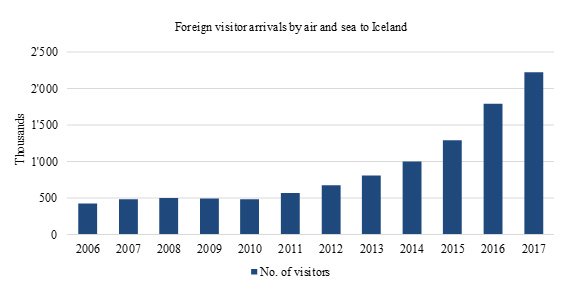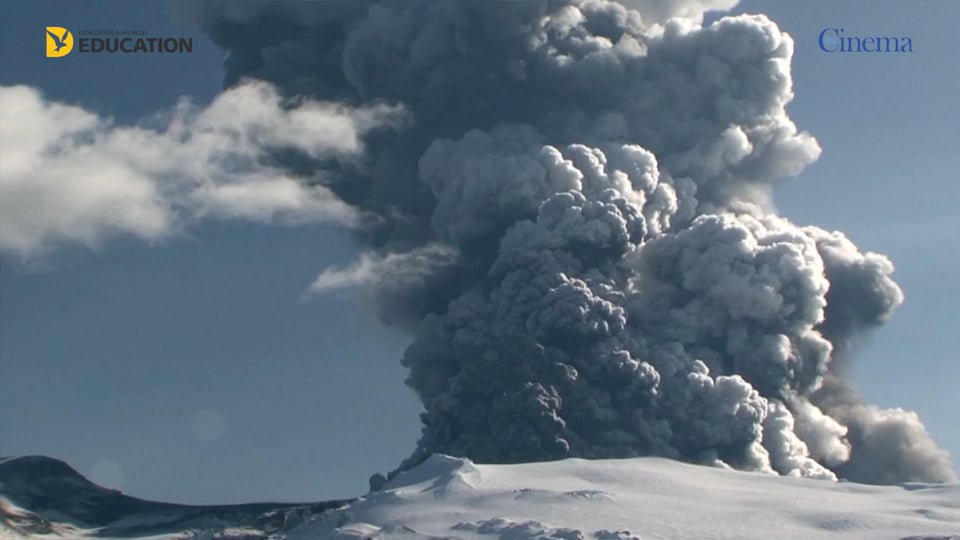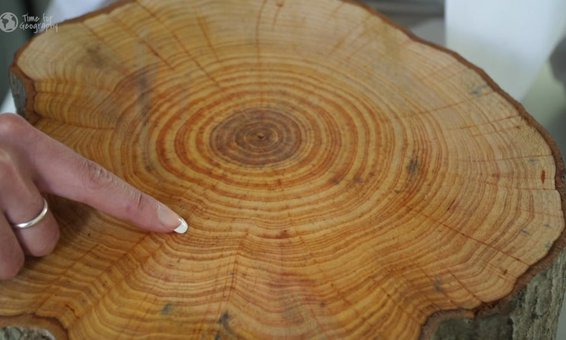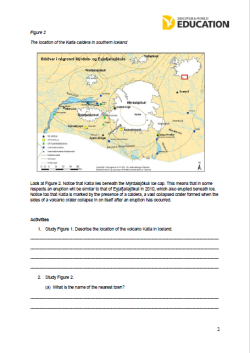- 0 Shopping Cart


Case Study – The 2010 eruption of Eyjafjnallajokull
Cambridge iGCSE Geography > The Natural Environment > Earthquakes and Volcanoes > Case Study – The 2010 eruption of Eyjafjnallajokull
Case Study – The 2010 eruption of Eyjafjallajökull
Background information.
Location: Eyjafjallajökull is located in southern Iceland.
Level of Development in Iceland: Iceland is a developed country with a strong economy. It has advanced infrastructure, healthcare, education, and a high standard of living.
Volcano Details: Eyjafjallajökull is a composite (stratovolcano) covered by an ice cap. The name describes the volcano , with Eyja meaning island, fjalla meaning mountain, and jokull meaning glacier. You can find out how to pronounce Eyjafjallajokull on the BBC website .
Its eruption can cause significant ash plumes and glacial meltwater floods known as “jökulhlaups.”
What caused the eruption of Eyjafjallajökull?
Iceland is situated on the Mid-Atlantic Ridge, a constructive plate boundary that divides the North American Plate from the Eurasian Plate. These two tectonic plates gradually drift apart because of the ridge push exerted along the Mid-Atlantic Ridge. As they move away from each other, magma from beneath the Earth’s crust fills the magma chambers located below Eyjafjallajökull. The interconnection of several of these chambers has created a substantial reservoir of magma beneath the volcano. Eyjafjallajökull is positioned underneath a glacier, adding to its complex structure.
What were the primary effects of the eruption of Eyjafjallajökull?
- Ash Cloud: The eruption created a massive ash cloud that turned day to night. The ash drifted over Europe.
- Air Travel Disruption: Over 100,000 flights were cancelled, affecting around 10 million travellers.
- Local Flooding: Melting glaciers caused flooding in the nearby areas.
- Damage to Agriculture : Ash fall led to the loss of grazing areas and contaminated water supplies.
- Property and roads: Homes and roads were damaged.
What were the secondary effects of the eruption of Eyjafjallajökull?
- Economic Impact : The airline industry alone lost £130 million a day due to airspace closure, totalling an estimated $1.7 billion. The price of shares in major airlines dropped between 2.5-3.3% during the eruption. Other sectors, such as tourism and farming, were also significantly affected.
- Environmental Impact : Long-term effects on soil and water quality were observed. Local water supplies were contaminated with fluoride.
- Health Concerns: Respiratory issues were reported due to fine ash particles in the air.
- Impacts on Kenya: The impact was felt as far afield as Kenya, where farmers laid off 5000 workers after flowers and vegetables rotted at airports. Kenya’s flower council says the country lost $1.3m daily in lost shipments to Europe.
What were the immediate responses to the eruption of Eyjafjallajökull?
- Evacuation : Around 800 people were evacuated from the immediate vicinity.
- Airspace Closure: European airspace was closed for several days.
- Emergency Services: Immediate response from local authorities, firefighters, and rescue teams.
What were the long-term responses to the eruption of Eyjafjallajökull?
- Monitoring and Research: Improved monitoring systems and research into ash cloud movement.
- Economic Support: Financial assistance for affected farmers and businesses.
- Regulations: Improved regulations for air travel during volcanic ash events.
- Airspace: The European Union developed an integrated structure for air traffic management. As a result, nine Functional Airspace Blocks (FABs) will replace the existing 27 areas. This means following a volcanic eruption in the future, areas of air space may be closed, reducing the risk of closing all European air space.
What opportunities did the eruption of Eyjafjallajökull bring?
Despite the challenges brought about by the eruption of Eyjafjallajökull, several benefits emerged from the event. One of the positive impacts was the environmental saving; the grounding of European flights during the eruption prevented the release of approximately 2.8 million tonnes of carbon dioxide into the atmosphere, as the Environmental Transport Association noted.
Additionally, the disruption in air travel led to a boon for other modes of transportation. Eurostar, for instance, experienced a significant increase in passenger numbers. The company recorded nearly a third rise in travel, accommodating 50,000 extra passengers on trains during this period.
Furthermore, the volcanic ash from Eyjafjallajökull deposited dissolved iron into the North Atlantic Ocean. This led to a plankton bloom, enhancing biological productivity in the region.
In response to the eruption’s negative publicity, the Icelandic government initiated a campaign to bolster tourism. The “Inspired by Iceland” initiative was launched with the specific goal of showcasing the nation’s scenic beauty, the warmth of its people, and the reassurance that Iceland was ready to welcome visitors. Consequently, the campaign had a positive effect, as evidenced by a substantial increase in tourist numbers, as depicted in the graph below.

Foreign visitor arrivals to Iceland
How does Iceland prepare for volcanic eruptions, and what was its impact?
Iceland has an effective monitoring system for its active volcanoes, with seismic stations and other instruments. There is close cooperation between meteorological, geological, and civil protection authorities. Public education and emergency planning are also vital to Iceland’s preparation strategy.
Iceland’s preparedness and rapid response, such as evacuating the area close to the volcano, mitigated the local impact of the eruption. However, the unprecedented disruption to air travel highlighted the need for better international coordination and understanding of volcanic ash’s effects on aviation.
The eruption of Eyjafjallajökull in 2010 is a crucial example of how a volcanic event can have local and global impacts. The incident underscored the importance of preparedness, monitoring, and international cooperation in minimizing the effects of such natural disasters. It also highlighted the interconnectedness of our modern world and how a geological event in one country can have far-reaching consequences.
Location and Eruption Details
Eyjafjallajökull erupted in 2010 in southern Iceland; it’s a stratovolcano covered by an ice cap. The eruption was caused by the North American Plate drifting from the Eurasian Plate along the Mid-Atlantic Ridge, creating a magma reservoir beneath the volcano.
Primary Effects
The eruption led to a massive ash cloud, air travel disruption with over 100,000 flights cancelled, local flooding from melting glaciers, and damage to agriculture , homes, and roads.
Secondary Effects
Economic loss reached an estimated $1.7 billion in the airline industry, long-term environmental impacts, health concerns from ash particles, and far-reaching effects on other countries like Kenya.
Immediate Responses
Approximately 800 people were evacuated; European airspace was closed for several days; emergency services responded quickly.
Long-Term Responses and Opportunities
Improved monitoring, regulations, and economic support were implemented; benefits included reduced CO2 emissions, increased passenger numbers in trains like Eurostar, enhanced biological productivity in the North Atlantic, and a successful Icelandic tourism campaign.
Preparedness and Impact
Iceland’s effective monitoring, public education, and emergency planning mitigated the local impact but emphasized the need for international coordination and understanding of volcanic ash’s effects on aviation. The eruption illustrated the interconnectedness of modern society and the far-reaching consequences of geological events.
Check Your Knowledge
Coming soon
Test Yourself
The natural environment, share this:.
- Click to share on Twitter (Opens in new window)
- Click to share on Facebook (Opens in new window)
- Click to share on Pinterest (Opens in new window)
- Click to email a link to a friend (Opens in new window)
- Click to share on WhatsApp (Opens in new window)
- Click to print (Opens in new window)

Please Support Internet Geography
If you've found the resources on this site useful please consider making a secure donation via PayPal to support the development of the site. The site is self-funded and your support is really appreciated.
Search Internet Geography
Top posts and pages.
Latest Blog Entries
Pin It on Pinterest
- Click to share
- Print Friendly

Eyjafjallajokull 2010 volcanic eruption case study
Tectonic Hazards Community Insight
Provided in partnership with

- For partners
- For partner schools (coming soon)

Evidence of climate change
Climate Change – Knowledge Booster
Log in or sign up to manage your videos and for new video alerts Log in Sign up
Course links: GCSE • IGCSE • A-level • IA-level • IB Geography
This award-winning geography case study video resource reflects on the eruption of Eyjafjallajokull in 2010 and looks ahead to potential volcanic eruptions in Iceland.
In this video, we cover:
- The causes and impacts of the eruption, with visits to some of the localities directly affected - Volcano monitoring and preparedness - The impacts associated with the future eruption of Katla - Positive impacts of the volcanic eruption on tourism in Iceland
This teaching resource uses narrative, incisive interviews of local people, stunning archive footage of the eruption itself and supportive maps and diagrams to show that, through detailed scientific knowledge and monitoring, the people in Iceland not only understand the threats posed by volcanic eruptions but also see the rich benefits of living in the ‘Land of Fire and Ice’.
Visit Discover the World Education to download the free teaching resources, which accompany this video: http://bit.ly/2xzJ8r5
Resources you can trust
Eyjafjallajokull: A geography case study

A free 15-minute video from Discover the World Education on the causes and impacts of the eruption of Eyjafjallajokull, Iceland, in 2010. The video also considers volcano monitoring and preparedness, and the potential impacts of the future eruption of nearby Katla.
It is suitable for key stages 3–5 and serves as excellent support for the study of tectonic hazards and their associated risks.
The video is available here:
Eyjafjallajokull Case Study from DiscovertheWorldEducation on Vimeo .
Accompanying worksheets, with answers, can be downloaded in the zipped folder.
The video covers:
- the causes and impacts of the eruption, with visits to some of the localities directly affected by the disaster
- volcano monitoring and preparedness
- the impacts associated with the future eruption of Katla
- the positive impacts of the volcanic eruption on tourism in Iceland.
It shows how detailed scientific knowledge and monitoring allow people in Iceland not only to understand the threats posed by volcanic eruptions but also to see the benefits of living in the ‘Land of Fire and Ice’.
This short film combines narrative with:
- interviews with local experts (including geology writer and broadcaster Ari Trausti)
- footage of the 2010 eruption
- supporting maps and diagrams.
Eyjafjallajokull: A geography case study received the Highly Commended Award at the Scottish Association of Geography Teachers Conference and the Silver Award at the Geographical Association Awards.
All reviews
Resources you might like.
- International
- Education Jobs
- Schools directory
- Resources Education Jobs Schools directory News Search

Eyjafjallajökull Volcanic Eruption Case Study A-Level GCSE
Subject: Geography
Age range: 16+
Resource type: Lesson (complete)
Last updated
13 May 2024
- Share through email
- Share through twitter
- Share through linkedin
- Share through facebook
- Share through pinterest

17 slide PowerPoint Presentation to act as a case study for the Icelandic Eyjafjallajökull Volcanic Eruption.
Suitable for AS, A-Level and high achieving GCSE students.
Tes paid licence How can I reuse this?
Get this resource as part of a bundle and save up to 38%
A bundle is a package of resources grouped together to teach a particular topic, or a series of lessons, in one place.
GCSE Geography Ultimate Bundle ALL TOPICS FOR GCSE - Remote Learning
An exciting bundle containing PowerPoint presentations for every single GCSE Geography topic! Ideal for remote distance learning. Hundreds of colourful, intuitive and informative slides of content as well as the Paper 3 skills presentation included. (The contents of each individual presentation and the topics featured in them can be discovered by clicking the individual file in the bundle on this page where it will be visible in more detail) Saving of 38% compared to buying each item individually.
Your rating is required to reflect your happiness.
It's good to leave some feedback.
Something went wrong, please try again later.
This resource hasn't been reviewed yet
To ensure quality for our reviews, only customers who have purchased this resource can review it
Report this resource to let us know if it violates our terms and conditions. Our customer service team will review your report and will be in touch.
Not quite what you were looking for? Search by keyword to find the right resource:
- Skip to main content
- Skip to secondary menu
- Skip to primary sidebar
- Skip to footer

Geographical
Official magazine of the Royal Geographical Society (with IBG)
Volcanic eruptions on Iceland might last decades
4 July 2024 3 minutes

A new study reveals that volcanic eruptions in Iceland might become more frequent, and the instability could last decades
By Stuart Butler
With over 11 per cent of the island covered in glaciers and around 130 volcanoes (32 of them active) dotting the landscape, Iceland well deserves its reputation as the island of fire and ice. Both glaciers and volcanoes can be extremely destructive. Glaciers crush the ground under them and, over time, reshape the landscape. Volcanoes play a similar role but often in a much shorter time. In recent years, the most infamous Icelandic volcanic eruption was when Eyjafjallajökull erupted in 2010 and sent a volcanic dust cloud into the atmosphere, shutting down air space across most of Europe for several days. Fortunately, most of the time, volcanoes are inactive, and in Iceland, a volcano erupts on average once every five years.
But imagine the impact it could have on day-to-day life if the incidence of volcanic eruptions were to significantly increase. Well, people on Iceland’s Reykjanes Peninsula, which is home to 70 per cent of the island’s population as well as the biggest city (the capital, Reykjavik, is situated just at the northeastern edge of this peninsula), as well as the international airport, might have to get used to living in an area of heightened volcanic activity. The volcanoes on the peninsula have been dormant for around 800 years, but since 2021, there have been eight separate eruptions. The latest of which took place in May and June of this year. These eruptions have already brought great disruption and structural damage and led to the government declaring a state of emergency. Urban centres have been evacuated, and buildings and roads have been destroyed.
A new report says this might be just the start of an extended period of heightened volcanic activity that will see recurring eruptions lasting ‘years to decades and possibly centuries’. By analysing seismic tomography imaging and the composition of lava samples, an international team of scientists has worked out the geological processes behind the new volcanic era.

‘Almost all of Iceland’s island is built from lava’, said Ilya Bindeman, a volcanologist and earth sciences professor at the University of Oregon , and one of the report authors. ‘The country sits on the Mid-Atlantic Ridge , the tectonic plate boundary that causes North America and Eurasia to push further apart. The drifting of these plates can spark volcanic eruptions when a hot rock from the earth’s mantle — the middle and largest layer of the planet — melts and rises to the surface.’
Although scientists know the origin of Reykjanes Peninsula’s current eruptions is plate movement, the kind of magma storage and plumbing systems that feed them remain unidentified. ‘The peninsula consists of eight volcanically active sites, so understanding whether there is one shared magma source or multiple independent ones and their depth can help predict the duration and impact of these eruptions,’ said Bindeman.
By using geochemical and seismic data to examine samples of lava rock from two different volcanoes in the peninsula, the team involved in the study concluded that the volcanoes had similar ‘fingerprints’, which would indicate a shared magma storage zone below the peninsula. Imaging of the earth’s interior based on local earthquakes also suggested the existence of a lava reservoir about 8.8km to 12 km (5.5 to 7.5 miles) below the earth’s surface.
The report concludes that this marks the beginning of potentially persistent volcanic episodes in Iceland. Of course, such news immediately raises the question of how long this volcanic episode might last and how violent it might turn out to be. Unfortunately for the residents of the Reykjanes Peninsula, the researchers can’t precisely predict yet how long the episodes and the gaps between each will last.
‘Nature is never regular,’ Bindeman said. ‘We don’t know how long and how frequently it will continue for the next ten or even hundred years. A pattern will emerge, but nature always has exceptions and irregularities.’
Related articles:
- Volcanic eruption in Iceland near capital city
- How to photograph Iceland, land of fire and ice
- Iceland’s new ‘baby volcano’ spews out tornado
- World’s largest volcanic eruption took place 7,300 years ago
- Are we prepared for a major volcanic eruption?

Published in the UK since 1935, Geographical is the official magazine of the Royal Geographical Society (with IBG) . Informative, authoritative and educational, this site’s content covers a wide range of subject areas, including geography, culture, wildlife and exploration, illustrated with superb photography.
Click Here for SUBSCRIPTION details
Want to access Geographical on your tablet or smartphone? Press the Apple, Android or PC/Mac image below to download the app for your device

More from Geographical
- Subscriptions
- Get our Newsletter
- Advertise with us
- Privacy policy
- Terms & Conditions
A Level Geography Eyjafjallajökull Case Study

Students also viewed

IMAGES
VIDEO
COMMENTS
Eyjafjallajokull Case Study - Find out about the causes and effects of the eruption of Eyjafjallajokull in 2010. X; ... Eyjafjallajokull is a volcano located in Iceland. The name is a description of the volcano with Eyja meaning island; fjalla meaning mountain; and jokull meaning glacier. ... AQA GCSE Geography Pre-release Resources 2024 24 ...
Case study of the Eyjafjallajökull eruption in Iceland in 2010. This is the ninth video for the AQA GCSE 9-1 Geography course, and the ninth video of the Cha...
The eruption of Eyjafjallajökull in 2010 is a crucial example of how a volcanic event can have local and global impacts. The incident underscored the importance of preparedness, monitoring, and international cooperation in minimizing the effects of such natural disasters. It also highlighted the interconnectedness of our modern world and how a ...
Ice melted which causes glacial water to flood onto volcano. Tremendous Lahars (resulting from melting ice) added ~3 miles to Icelands southern coast. Study with Quizlet and memorize flashcards containing terms like What is icelands population, What percentage of Iceland is covered in Tundra, Where are the volcanoes in Iceland found and more.
Eyjafjallajökull eruption, Iceland 2010: Suggested Answers Describe the location 5 of the case study. Eyjafjallajökull is a small ice-cap in southern Iceland. The name means 'island mountain glacier'. Below the toxic gas emissions, etc. ice is a volcano. Iceland is in the Atlantic Ocean. Identify two primary impacts of the eruption.
The volcano was covered by a glacier, and sub glacial activity where cauldrons melted causing floods of meltwater on 14th April. Travelled at 3 000 m^3/sec, causing the evacuation of 700 people. Hazards - lava. Emitted from a 500m long fissure at 1000°C, spewing 150m into the air. Mostly basaltic.
This award-winning geography case study video resource reflects on the eruption of Eyjafjallajokull in 2010 and looks ahead to potential volcanic eruptions in Iceland. In this video, we cover: - The causes and impacts of the eruption, with visits to some of the localities directly affected. - Volcano monitoring and preparedness. - The impacts ...
It is a volcano in Iceland located near a constructive plate margin. It reaches 1,666m high, below the Eyjafjalla glacier, 125km SE of Reykjavik. ... gcse geography case studies paper 1. 14 terms. elizahmsweeney. Preview. Habitat Conservation - ENVS. 5 terms. eb328594. Preview. Somerset levels. 5 terms. SavannahRose2501. Preview. Terms in this ...
A free 15-minute video from Discover the World Education on the causes and impacts of the eruption of Eyjafjallajokull, Iceland, in 2010. The video also considers volcano monitoring and preparedness, and the potential impacts of the future eruption of nearby Katla. It is suitable for key stages 3-5 and serves as excellent support for the ...
Eyjafjallajökull 2010 eruption case study. Subject: Geography. Age range: 14-16. Resource type: Worksheet/Activity. File previews. pptx, 5.11 MB. pdf, 587.58 KB. Lesson focusing on the events of the 2010 Eyjafjallajökull eruption in Iceland. Suitable for A Level Geographers of all new (2016) specifications and could easily be adapted for GCSE ...
Recall volcanic eruption case studies in high and low income countries Presenter notes Some suggested notes for each slide and information for the presenter. Questions the presenter could ask students are highlighted in bold. The Geological Society gives permission for presentations and notes to be adapted to suit the presenters needs. Iceland
en the North American and Eurasian plate.Eyjafjallajökull is a 500m. long fissure volcano, that erupts. basalt. Basaltic lava is fluid in nat. r above the volcano.10km high a. h plume,containing sulphur, was emitted. This reached the stratosphere and caus. or air-travel in Europe.Some earthquakesFlooding from a jökulhau. river due to the me.
Eyjafjallajökull Volcanic Eruption Case Study A-Level GCSE. Subject: Geography. Age range: 16+. Resource type: Lesson (complete) File previews. pptx, 709.98 KB. 17 slide PowerPoint Presentation to act as a case study for the Icelandic Eyjafjallajökull Volcanic Eruption. Suitable for AS, A-Level and high achieving GCSE students. Tes paid ...
Case study: Iceland's Eyjafjallajokull volcano In April 2010 the Eyjafjallajokull volcano in Iceland erupted. Facts about the eruption The eruption started on 20 March. Case study — eruption in a…
Volcanoes CASE STUDY MEDC: Iceland. FACTS. Located on the North American plate and the Eurasian Plate; Although on a constructive plate boundary, it is considered a composite volcano. Typical features of a composite volcano includes. steep sides and narrow base due to thick lava building up in layers; infrequent yet powerful eruptions of thick lava
Iceland lies on the Mid-Atlantic Ridge, a constructive plate margin separating the Eurasian plate from the North American plate. As the plates move apart magma rises to the surface to form several active volcanoes. In March 2010, magma broke through the crust beneath Eyjafjallajokull glacier. This was the start of two months of powerful eruptions.
the volcano deposited ash on the Atlantic, this caused an plankton bloom; Mass grounding of European flights prevented 2.8 million tones of carbon dioxide into the atmosphere; social. people downwind of the volcano had to wear goggles and facemasks; 500 local cattle farmers and their families evacuated; the ash contaminated water supplies
Volcanoes case study 1 -Eyjafjallajökull. Tectonic setting of the hazard. The nature of the hazard (type, magnitude, frequency) Vulnerability. Capacity to cope (prediction, prevention, preparation) Institutional capacity. The impact of the event (social, economic, environmental), in the short and longer term.
Learn about and revise different types of volcanoes and their characteristics and effects with GCSE Bitesize Geography (Edexcel).
A new study reveals that volcanic eruptions on Iceland might become more frequent and the instability could last decades. ... most of the time, volcanoes are inactive, and in Iceland, a volcano erupts on average once every five years. But imagine the impact it could have on day-to-day life if the incidence of volcanic eruptions were to ...
Chapter 4. 7 terms. choberg. Preview. Unit 7: Human Population. Teacher 13 terms. jpeterson1004. Preview. Study with Quizlet and memorize flashcards containing terms like E16/ Iceland 2010 volcanic eruption, When?, Where? and more.
The university of Iceland and the British meteorological office where the London VAAC volcanic ash advisory centre stationed. Height of the eruption plume was monitored throughout the eruption with the weather radar at the Keflavík airport web, cameras, and visual evaluations from ground and overview flights were made to this was important for ...
Eyjafjallajokull is located below a glacier. The Eyjafjallajökull volcano erupted in 920, 1612 and again from 1821 to 1823 when it caused a glacial lake outburst flood (or jökulhlaup). It erupted three times in 2010—on 20 March, April-May, and June. The March event forced a brief evacuation of around 500 local people.
See all Geography resources » See all Natural hazards resources » Related discussions on The Student Room. OCR A-Level Geography Geographical Debates | [12th June 2023] Exam Chat » geography natural hazards » geography » case studies for ocr gcse geography b » Edexcel A-Level Geography Paper 1 | [17th May 2023] Exam Chat »